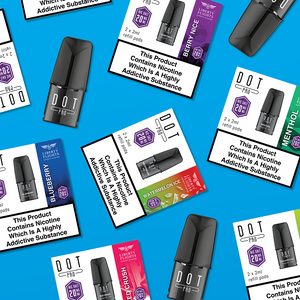
Battery Safety – Refresher

With an increase in tabloid headlines reporting exploding e-cigarette batteries, it’s time for a refresher about battery safety and reinforce the message that good-quality batteries, from trusted sources and handled sensibly will rarely encounter problems. See our top tips and recommendations below:
Why do some batteries explode?
If treated improperly, lithium batteries can suffer from what is called ‘thermal runaway’. This causes the battery to become very hot and vent off gas. This occurs when the separator sheet that keeps the positive and negative electrodes apart gets broken as a result of the battery being dropped or damaged. When the electrodes touch, the battery heats up very quickly causing the electrolyte solution within it to vent. The heat itself or a nearby spark can then ignite the venting fluid resulting in a fire.
What protection is in place in batteries to keep them safe for use?
Reputable manufacturers achieve reliability by adding three layers of protection to Li-ion batteries. Firstly, they limit the amount of active material whilst still achieving an effective balance between energy density and safety; secondly, they include various safety mechanisms within the cell; and thirdly, they add an electronic protection circuit in the battery pack.

It is important to always buy from a reputable supplier who has taken the above precautions and can provide the appropriate documentation. At Liberty Flights we verify all our batteries come with a CE Certificate of Conformity, including the detailed test report. In addition, we also require suppliers to provide a Restriction of the use of Certain Hazardous Substances (RoHS) and Waste Electrical and Electronic Equipment (WEEE) certificate, under Directive (2011/65/EU) and the supporting test report. Other reports (e.g. IEC62133, UN38:3), transportation reports and Safety Data Sheets (SDS) are also required and checked.
What can customers do to protect their batteries from damage?
We would always recommend storing and transporting loose batteries separated from one another, in non-conductive (e.g. plastic) containers. Never store batteries where they can come into contact with metal items such as loose change or keys as these can cause a short circuit.
Top Tips
- Manufacturer’s device specific instructions for charging should be strictly followed.
- Always use the charger provided with the device. Incorrect or incompatable chargers can result in failure.
- Always charge batteries on a hard, flat surface, not on soft furnishings or carpet.
- Never leave a charging battery unattended or overnight.
- If possible, use a charging bag to encase the charger and battery as they can offer additional protection whilst charging.
- Once fully charged, remove the battery from the charger and unplug from the socket.
- Do not over-tighten any screwed connections to rechargeable batteries as this can result in mechanical damage. For example, the battery can be push down onto the centre pin causing a short.
- Never use batteries where there is visible damage to the plastic cover, terminals, insulation or case, replace it instead.
- Do not use batteries that have stopped functioning or charging normally.
- Do not store or use batteries in extremes of temperature, high or low.
- Do not submerge batteries in water.
- Dispose of and recycle batteries in accordance with your country’s appropriate legislation.
Stay safe and happy vaping everyone!
Lucy Robins
Chief Scientific Officer
References
http://www.ivva.ie/latest-news/battery-safety-2/
http://batteryuniversity.com/learn/article/lithium_ion_safety_concerns









